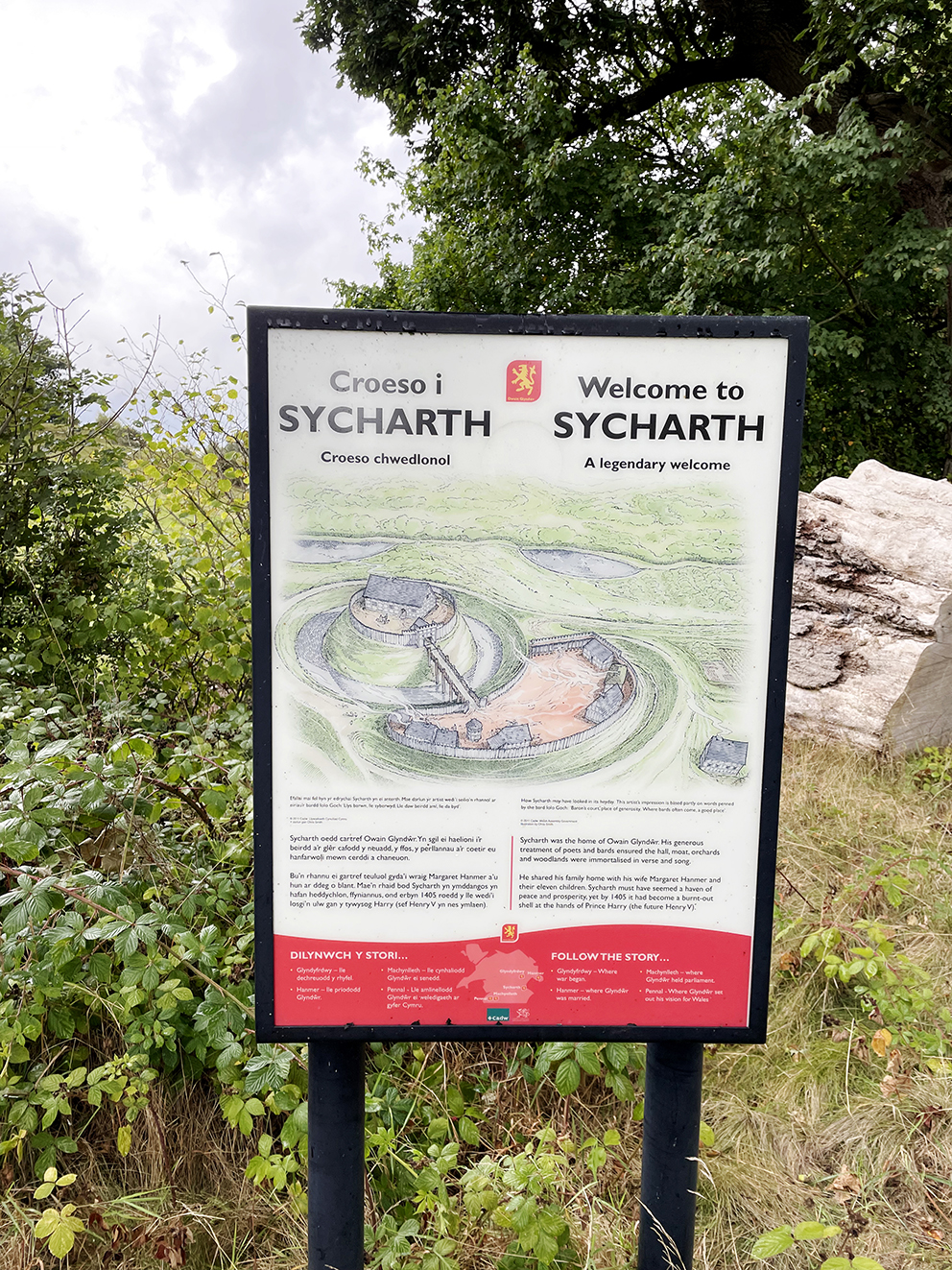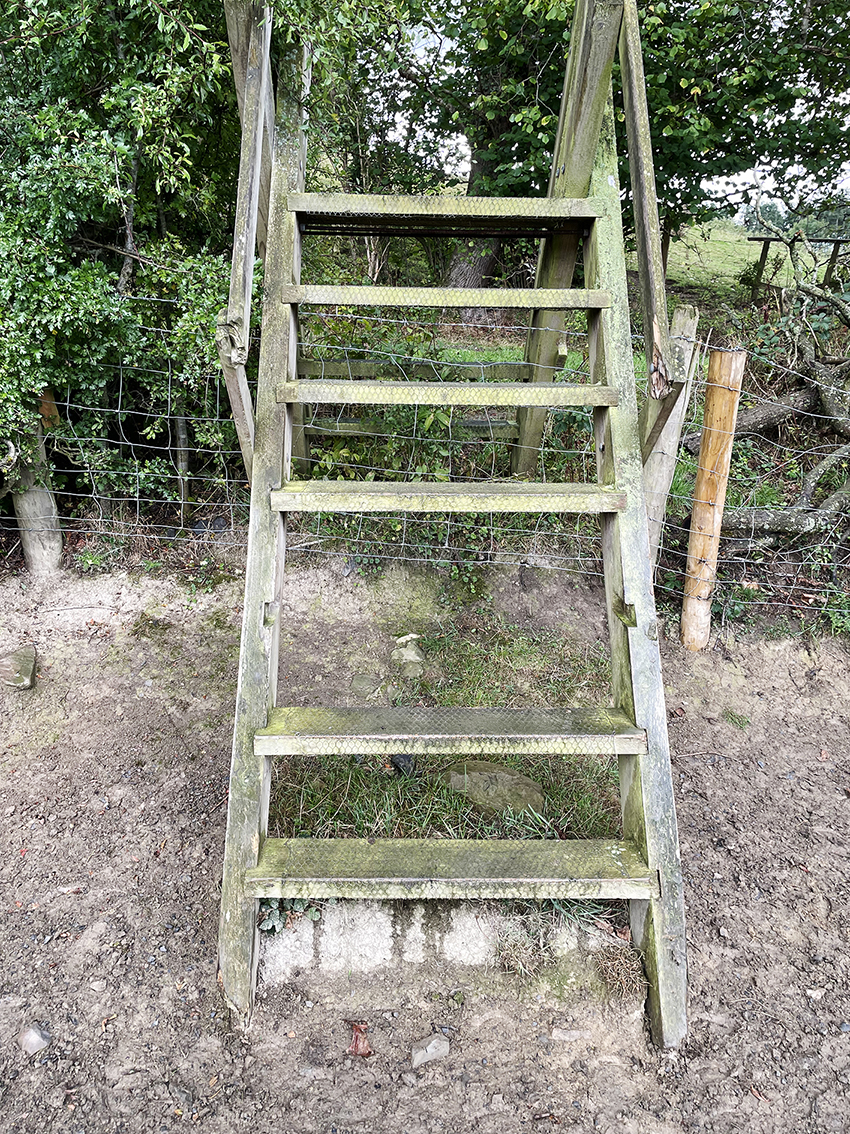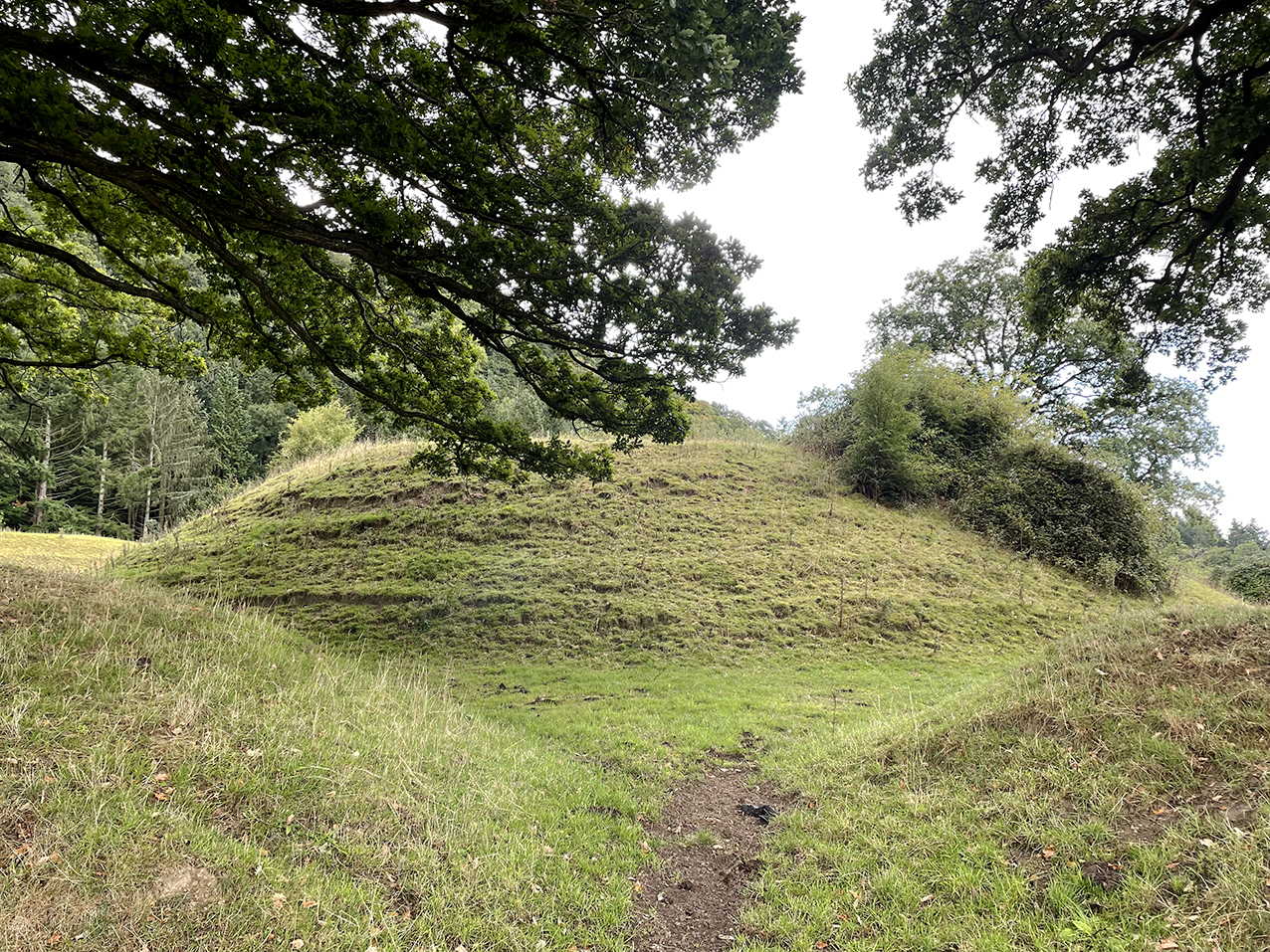![]() I hadn’t planned on writing anything for a while, but after visiting Sycharth today, the home of Owain Glyndŵr, I am compelled to put a few thoughts into words.
I hadn’t planned on writing anything for a while, but after visiting Sycharth today, the home of Owain Glyndŵr, I am compelled to put a few thoughts into words.
Fortunately, I took a long way home, stopping here and there; which gave me time to cool down, reflect on what I’d seen, and think about what I was going to write.
♦
First, I’m going to provide a map, for anyone minded to visit. I’m doing this because you’ll see no directional signs of any kind for Sycharth . . . until you’ve found it! I’m not sure if SatNav can cope.

Sycharth is close to the border, on a narrow road south of the village of Llansilin, and once you’ve found it, you’d better hope you can park your car, for there are just four parking spaces. When I arrived today all four spaces were taken.
(My clutch then took a bit of a hiding as I engaged in some dextrous parking.)
Before heading to Sycharth proper I read the information board put up by Cadw, the ‘Welsh Government’ agency with responsibility for the site.
Talking of sites, and Cadw, I’m writing this on September 16, the day we celebrate the life and heroic deeds of Owain Glyndŵr; and yet the homepage of the Cadw website has not a single mention of him – it’s all Anglo-Norman castles.
The information board is very light on, well, information. Which results in this rather curious phrase: ‘ . . . yet by 1405 it (Sycharth) had become a burnt-out shell at the hands of Prince Harry (the future Henry V).’

Without the context of a brutal and bloody war of national liberation that reads as if this Harry bloke should have been banged up for being a pyromaniac.
The cars already parked in Sycharth’s miniscule car park seemed to belong to school teachers, up on the mound with a bunch of kids. Once I’d frightened them off I had the place to myself.
But before even getting to the hallowed ground I had to negotiate the stile. Now I’m six foot tall and reasonably fit, but many others would have struggled. One step was missing and the whole bloody thing looked as if it was about to collapse into firewood.

After negotiating the stile I had to traverse the ground to the remains of the motte and bailey, and that meant dodging cowpats. Yes, I appreciate that Sycharth is on the land of a working farm. But even so . . .
If the so-called ‘Welsh Government’ can find £4.25m to buy flood-prone Gilestone farm – ostensibly for the Green Man Festival – then I’m sure to God it can find a few thousand to buy the field containing the home of Owain Glyndŵr.
It certainly could if it wanted to.

I’m not suggesting that Sycharth be rebuilt, or that it needs a 500-space car park. (The local roads couldn’t cope.) But the site could be bought, and tidied up. With room for 15 – 20 cars. And it could definitely be better signposted.
The bottom line is that I believe we should show more respect for, and gratitude towards, Owain Glyndŵr. Because if it had all ended in 1283, then there might have been no Wales today.
One job that could be done immediately is to replace that completely uninformative information board! And put up a few bloody signposts.
Because at present the whole site carries an air of neglect, as if certain people wished they didn’t have to bother. As if they don’t really want anyone going to Sycharth.
Another example of this neglect would be the weeds crowning the mound.

I know Cadw is little more than English Heritage (West) and interested only in Anglo-Norman castles and the income they generate, but things need to change.
Cadw needs to be reminded that it is first and foremost a body celebrating and conserving Welsh history. And to us, as a nation, Sycharth is more important than Caernarfon castle.
It may be humble by comparison, but the princes that lived at Sycharth were our princes.

As I got back to my car a few other people were arriving. Pilgrims, by the look and sound of them. I hope their faith helped them overcome the disappointment I’m sure they felt at what they found.
Maybe I should have warned them about the stile, and the cowpats, but I was too busy thinking about those anglocentric crawlers at Cadw.
And also thinking about us as a nation, for tolerating what I’d just seen.
UPDATE 28.09.2022: By an amazing coincidence someone else visited Sycharth around the same time I did, drew attention to exactly the same issues I commented upon (even down to the broken stile), and also called for the site to be taken into public ownership. Amazing!
♦ end ♦

